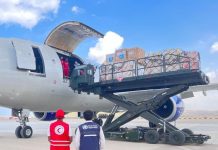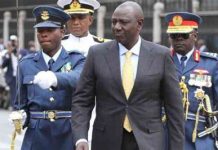People have always wanted to travel fast, ever since the first person galloped across the plains on horseback,” says Mike Bannister. And he should know. Mr Bannister flew Concorde with British Airways for 22 years. As the airline’s senior Concorde captain he piloted the final commercial flight over London in October 2003 and subsequently the very last flight delivering a Concorde to a Bristol museum.
Nearly two decades later the world is edging closer to again having passenger jets that can fly faster than the speed of sound.
This month, Boom Supersonic rolled out its XB-1 supersonic test plane. It’s the first civilian supersonic aircraft since the Soviet Union’s Tupolev TU-144 in 1968.
The skinny, sharply-pointed machine will allow Boom to confirm aspects of the design of its proposed Overture, a much more elegant delta-winged project that echoes Concorde.bOverture is intended to carry between 65 and 88 passengers across oceanic routes, sparing human populations the supersonic boom generated by its Mach 2.2 speed.
Nasa has a more outlandish test aircraft in the wings, the spindly X-59. This will fly in 2022, chasing the prize of sustained supersonic flight overland. This means finding ways to eliminate, or at least mitigate, the supersonic boom. Then there’s Aerion, claiming its AS2 design will offer civil supersonic flight by the end of the decade. But with just 8-10 passengers the AS2 is aimed at an entirely new market, that for supersonic business travel.
Mr Bannister says it’s important to understand that these jets are not rivals, but new entrants in completely different sectors of commercial flight. With AS2, Aerion are hoping to fly overland at Mach 1.4, generating a low supersonic boom. Boom wants to go over the ocean at Mach 2.2 and in my opinion that’s the stronger market,” he says. One engineering problem that all of these aircraft have to overcome is how air is ingested by the engines at high speed. Gulping in air at supersonic speeds creates problems for all aircraft engines. The intakes are devised so as to break up that airflow and reduce it to a velocity the engine can cope with.
It’s a highly sensitive area, which even caused an Anglo-French rift at the time of Concorde’s retirement. Air France retired its fleet, but British Airways was keen to keep the aircraft flying. “One reason Airbus, which had assumed authority over Concorde’s design, wouldn’t give us the full design authority to keep it flying was because the intake design was still secret,” says Mr Bannister.











